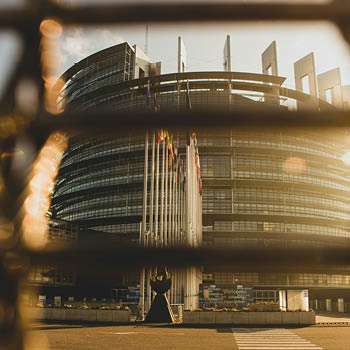Ten Year Strategy Must be Blueprint for Change
In his first major initiative since taking up his new role on January 1 2010, European Council president Herman Van Rompuy has convened a summit for February 11 to prepare for the 2020 Strategy, a ten year programme for creating a more competitive Europe. But can these plans really achieve anything? Only if they lay the groundwork for far-reaching change and adaptation.
It was of course the 2000 Lisbon Agenda which set out the first Ten Year Plan for the economic regeneration of the European Union. Who can forget the famous hostage to fortune, that Europe should become the world’s most competitive and dynamic knowledge-based economy by 2010?
The Lisbon Agenda was a creature of its time. The millennium dot-com boom was still booming, the digital revolution was expected to transform society. There was much talk of a new paradigm. Just as soaring stock markets ignored traditional industries in favour of the new, so the Lisbon Agenda envisaged old industries giving way to a new economy of high-tech research-based business creating employment and opening unbounded opportunities for the people.
It was not to be. The collapse of the dot-com dream was a disastrous start for Lisbon. The anticipated growth in output and jobs from the “new economy” proved an illusion. The industries which were expected to deliver a new world foundered in mountains of debt and disillusionment. No surprise then that all those early hopes were dashed.
Yet by the start of 2008 Europe’s economy had picked up. Enlargement had given a great boost and there were signs that governments were bringing more flexibility to their economies, for instance on tax policy and entrepreneurship, where the Lisbon process encouraged many member states to facilitate the creation and expansion of small firms.
Employment participation had gone up from 62.2 per cent of the potential workforce to 65.9 per cent, not yet to the 70 per cent Lisbon target, but certainly an improvement. The growth rate was improving, at 3.2 per cent in 2006 and 2.9 per cent in 2007 – compared with the 3 per cent Lisbon aim.
EU policy-making had made progress too, opening up sectors like telecoms and financial services. The new technologies had become deeply entrenched in traditional industries.
Then came the banking crisis. Collapsing output and rising unemployment have been the consequence and it is clear that the Lisbon targets have been hopelessly missed. Growth slumped to 0.8 per cent in 2008. Economic prospects for 2010 and 2011 look pretty gloomy.
So can Ten Year Plans really achieve anything? I see that Spanish prime minister José Luis Rodriguez Zapatero believes the Lisbon Agenda to be too soft. He wants the adoption of new policies which are binding on the member states, with power for the European Commission to penalise countries which fail to apply them.
This is tough talk, which would be linked with a formalised European economic policy, maybe beginning within the Euro Group. President Sarkozy is a keen supporter of this approach. Angela Merkel is definitely not. It contrasts with the soft policy philosophy of Lisbon which relied on peer pressure, search for best practice and an emphasis on opening up markets and stimulating research.
There is no doubting the challenge which Europe faces as it emerges from the recession. It strikes me that the biggest priority for a 2020 Strategy is to spell out the need for change and identify the hard choices for achieving it. Wealth creation must be the absolute priority. Europe’s industries face huge competitive pressures from countries like China and India at the same time that public spending faces increasing demands from an ageing population. It won’t be easy to find common ground. A good test for Mr Van Rompuy indeed!
Find Out More
-
The EU year of change: Act 2
June 13, 2024
-
EU climate policy: The new borderlines?
May 27, 2024


